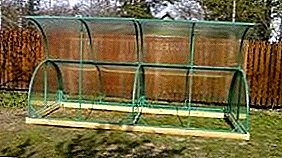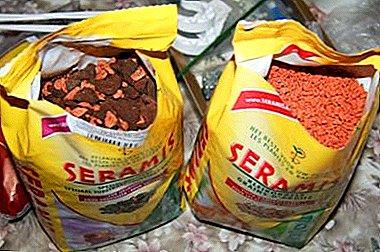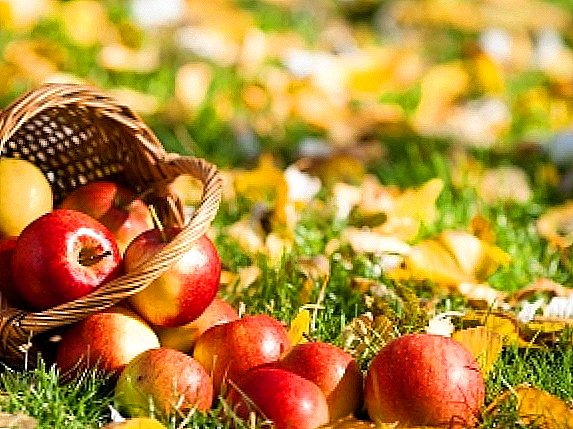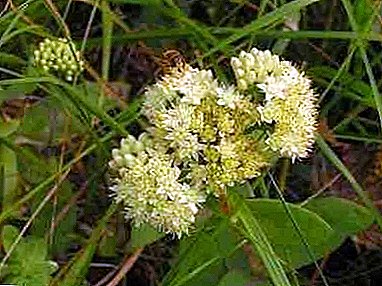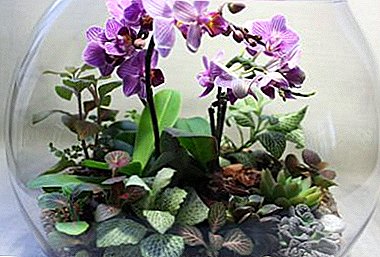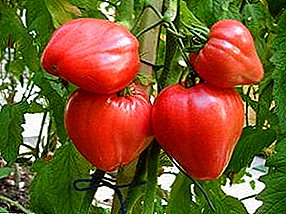
Proper and timely feeding eggplant seedlings will not only get a good harvest, but also to avoid problems with its cultivation.
More details on how to fertilize young shoots and what mistakes should be avoided in our article.
General rules
During the cultivation of eggplant seedlings you need to spend 3-5 root dressings. This will strengthen the root system and the shoots in general and will avoid many problems, such as falling seedlings, its yellowing and others.
It should be taken into account where you are going to grow eggplants: in unprotected soil or in a greenhouse. From this choice will depend on the composition of mixtures for the preparation of dressings.
How to feed eggplant seedlings for growth: step by step instructions
 there is two important feeding stages young plants: before and after picking.
there is two important feeding stages young plants: before and after picking.
Before picking, complex fertilizers, organic matter, and also fertilizers containing potassium and nitrogen are applied. Top dressing of seedlings begins immediately after the appearance of the first shoots.
They are introduced in liquid form, watering seedlings at the root. The ingestion of the nutrient mixture on young leaves can cause significant damage to the plant, so if the fertilizer gets on the foliage, it should be washed with warm water. Therefore, such procedures most often carried out in the early morningwhen the sun is not as active as during the day, because it is impossible to keep track of every drop.
How to feed eggplant seedlings after picking? For this use complex dry fertilizerssuch as "Ideal" or "Kemira wagon". They are diluted in water, usually take one teaspoon per five liters of water, pouring the young seedlings under the root with this solution, avoiding contact with the leaves.
There is another option: it is a liquid fertilizer, to prepare the solution you will need one cap per one-half liter of water, it should be watered in the same way as with dry fertilizers. After 12-16 days, the amount of fertilizer will need to be doubled.
It is also necessary to change their composition, it is desirable that the composition of the fertilizer was phosphorus and potassium. Before this period, you should not carry out top dressing, salt shock may occur in eggplant seedlings, and this will negatively affect the condition of the seedlings.
IMPORTANT! If the seedlings began to grow slowly, and the leaves changed their color, in this case it is worth using the long-proven “Ideal” or “Señor Tomato” means. For the growth and strengthening of the roots is perfect tool "Wage earner" and "Agricola-forte."
 In addition to artificial dressings, the most widely used are natural feeding.
In addition to artificial dressings, the most widely used are natural feeding.
They have several advantages over chemical agents. First, they do not accumulate in the soil.
That is, the next year will not require special treatment of the soil, if you want to plant something else. Secondly, it is the ecological purity of the product. To do this, use as a ready-mix, and cooked yourself.
Feeding eggplant seedlings at home. The most popular among the ready ones are "Bioton", "Biohumus" and the "Healthy Garden" biocomplex. Also, nutritional mixtures can be prepared at home. For example, banana peel infusion perfect not only for eggplants, but also for other solanaceous crops.
It is prepared as follows: 3-4 banana peels are poured with boiling water about 1.5-2 liters and infused for 2-3 days. Similar infusion saturate the soil with potassium.
There is another option feeding and you can cook it yourself. This will require a weak old tea brew in the amount of three liters and a shell of ten chicken eggs, which must be ground, mixed and insisted for 3-5 days. Then you can water the young shoots of eggplant.
To prevent the disease as a black leg water should be only in the morningcloudy weather is ideal. This feeding will give a full range of vitamins and minerals to your seedlings, as well as strengthen resistance when attacked by pests.
 Some Aquarium owners use drained water to fertilize seedlings.
Some Aquarium owners use drained water to fertilize seedlings.
The use of such water is explained by the fact that it contains waste products of fish and aquatic plants, which has a beneficial effect on the state of the plants.
Such fertilizing will help not only to increase the growth of seedlings, but also to avoid a number of difficulties in growing seedlings, which literally await inexperienced gardeners at every step.
The first feeding eggplant seedlings
it very important stage in the development of seedlings and it should be carried out according to all the rules, the further development of the shoots will depend on it. There are several options than to fertilize eggplant seedlings for the first time, they are all good in their own way.
One of the most popular ways of feeding eggplant seedlings is based on application of potassium nitrate. This requires 30 grams of the substance diluted in 10 liters of water. This variant of feeding is universalIt is suitable for open ground and greenhouses.
The second way is fertilizer "Kemira-Lux". At 10 liters of water you need 20-30 grams of fertilizer, as well as the first method of feeding, it is well suited for outdoor and greenhouse shelters.
And the last option is also a mixture of fertilizers. It is used for feeding young seedlings in greenhouse shelters. One 5 grams of ammonium nitrate, 15 grams of superphosphate and 10 grams of potassium sulphate per 10 liters of water.
 These are the most common and proven methods of first feeding eggplant seedlings.
These are the most common and proven methods of first feeding eggplant seedlings.
The main and fundamental difference between mixtures for greenhouses and unprotected soil is that mixtures for unprotected land have a great effect.
They help future eggplants to resist diseases and parasites, and can also increase resistance to temperature changes.
Feeding eggplant seedlings is a difficult thing and only an experienced gardener can handle it. But if you are new to this business, you should not refuse, you will succeed. Good luck and great harvest!
Useful materials
Read other articles about growing and caring for eggplant seedlings:
- Different methods of cultivation: in peat tablets, in a snail and even on toilet paper.
- All features of sowing according to the lunar calendar.
- Golden rules for growing from seed.
- Features of cultivation in different regions of Russia: in the Urals, in Siberia and the Moscow region.
- Useful tips on preparing seeds before sowing.


